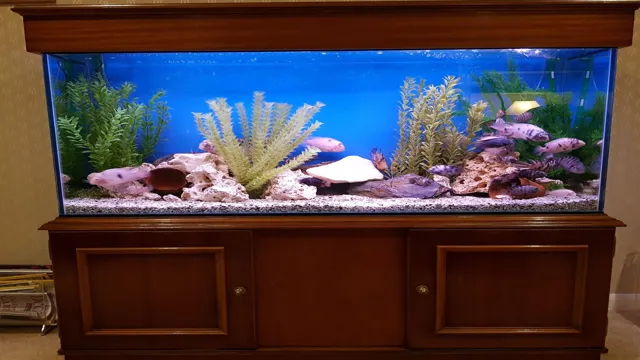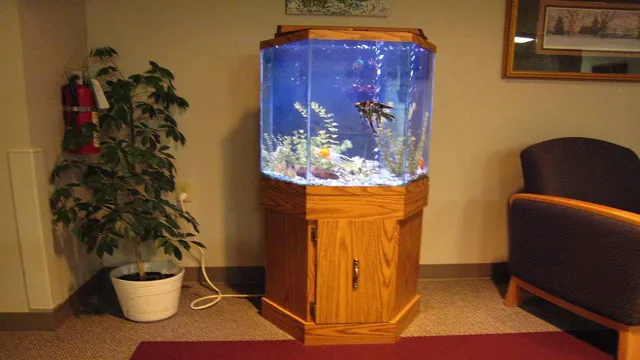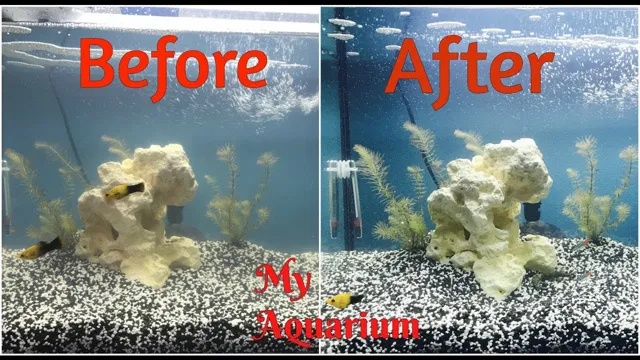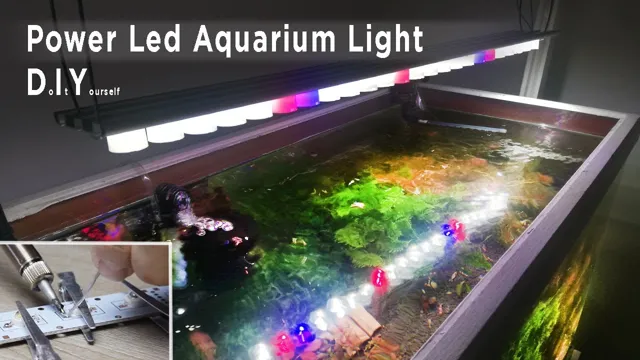How Thick is the Glass at Aquariums: A Comprehensive Guide for Choosing the Right Aquarium Glass Thickness

As an aquarium enthusiast, you understand that choosing the right glass thickness can be vital in ensuring the safety and longevity of your aquatic paradise. But with so many options available, how do you know which one is just right? It all comes down to finding the perfect balance between practicality and aesthetic appeal. While thinner glass may look sleek and modern, it also runs the risk of being too fragile and prone to cracks or leaks.
On the other hand, thicker glass may provide the necessary durability, but it can also appear bulky and cumbersome. So where’s the sweet spot? The ideal thickness for aquarium glass depends on a variety of factors, including the size and shape of your tank, the type and weight of your aquatic life, and your own personal preferences. As a rule of thumb, the thicker the glass, the safer and more secure your aquarium will be.
However, keep in mind that thicker glass also means higher costs and heavier weight. To make an informed decision, consider consulting with an experienced aquarium specialist who can assess your specific needs and help you choose the best option. With the right glass thickness, you can enjoy a stunning and sturdy aquarium that will bring joy and serenity to your home for years to come.
Overview of Aquarium Glass
When it comes to aquariums, the thickness of the glass is a crucial factor in ensuring the safety of the aquatic environment. Aquarium glass can range from 3mm to 30mm, depending on the size and type of the aquarium. For smaller aquariums such as those used for betta fish or shrimp, the glass is usually around 3-5mm thick.
However, for larger aquariums such as those used for marine fish or reef tanks, the glass can be as thick as 30mm. Thicker glass is necessary for larger aquariums as it provides better structural integrity and can withstand the pressure and weight of the water and substrate inside. It’s important to note that aquarium glass should always be specifically designed and tested for aquarium use, as regular glass is not suitable or safe for aquatic environments.
So, if you’re planning on setting up an aquarium, make sure you choose the appropriate thickness of glass to ensure a safe and secure environment for your aquatic pets.
Types of Glass Used in Aquariums
Aquarium Glass Aquarium glass is an important component of a fish tank that holds the aquatic environment together. The type of glass used determines the durability and strength of the aquarium. There are mainly two types of glass used in aquariums – tempered and annealed glass.
Tempered glass is five times stronger than annealed glass and can withstand higher pressure, making it suitable for large tanks. In contrast, annealed glass is more affordable and easy to cut, making it ideal for smaller aquariums. Some aquariums also use acrylic, which is lighter and more durable than glass.
However, it scratches easily and requires regular maintenance. Therefore, it is crucial to choose the right type of aquarium glass based on your needs and the size of your aquarium to ensure its longevity and safety.

Factors to Consider When Choosing Glass Thickness
When it comes to choosing the right glass thickness for your aquarium, there are several factors to consider. First and foremost is the size of your aquarium and the water pressure it will experience. Generally speaking, the thicker the glass, the stronger it will be and the more resistant to pressure.
However, thicker glass can also be more expensive and heavier, which may not be suitable for all setups. Another important factor is the type of fish and plants you plan to keep in your aquarium. Some species may require thicker glass to prevent them from breaking through.
Lastly, the overall aesthetics of your aquarium should also be considered when choosing glass thickness, as thicker glass can distort the view and affect the appearance of your underwater world. Overall, it’s important to weigh all these factors carefully before making a decision on the right glass thickness for your aquarium. (See Also: How to add oxygen to aquarium: Tips and Tricks for Optimal Fish Health)
Recommended Aquarium Glass Thickness
When it comes to choosing the right aquarium for your aquatic pets, it’s important to consider the thickness of the glass. Generally, the thickness of aquarium glass ranges from 4mm to 20mm, depending on the size and type of the aquarium. The larger the aquarium, the thicker the glass should be to ensure its stability and durability.
It’s recommended that tanks up to 20 gallons have a minimum glass thickness of 4mm, while tanks between 20 and 40 gallons should have a glass thickness of at least 5mm. For larger tanks, such as those over 75 gallons, the glass should be at least 10mm thick to provide the necessary support for the water and the weight of the fish. It’s important to keep in mind that thicker glass also means more weight, so the stand or surface where the aquarium will be placed should also be strong enough to support the added weight.
Overall, choosing the right glass thickness for your aquarium will ensure the safety and well-being of your aquatic pets.
Small Tanks (10 gallons or less)
When it comes to small tanks, thickness is crucial to ensure the safety of your fish. A glass thickness of at least 1/4 inch is recommended for tanks that are 10 gallons or less. This thickness ensures that the tank can withstand the pressure of the water and won’t crack or shatter easily.
Thicker glass also insulates better, and can help maintain a stable water temperature. It’s important to remember that the larger the tank, the thicker the glass needs to be to support the weight of the water. When choosing a tank, always choose one with the recommended glass thickness to ensure the safety and well-being of your aquatic pets.
So, when shopping for a small tank, keep in mind the recommended thickness of at least 1/4 inch for a safe and durable aquarium.
Medium-sized Tanks (up to 50 gallons)
When it comes to setting up a medium-sized tank (up to 50 gallons), it’s important to choose the right glass thickness to ensure durability and safety. A common recommendation is to use at least 6mm (1/4 inch) tempered glass for tanks up to 50 gallons. This thickness is sufficient to withstand the pressure and weight of water in the tank and offer a robust safety factor.
However, if you plan to house particularly heavy or large fish species that could potentially damage the glass, investing in thicker glass might be worth considering. Remember to also factor in the dimensions and shape of your tank, as these can impact the load-bearing capacity of the glass. With the right glass thickness, you can set up a medium-sized aquarium that offers both functionality and aesthetics, providing a safe and comfortable home for your aquatic pets.
Large Tanks (more than 50 gallons)
When it comes to large aquariums, choosing the right glass thickness is crucial. Generally, aquarium glass thickness should be proportional to the tank’s volume and height. For large tanks of more than 50 gallons, experts recommend using tempered glass that is around 1 inch thick.
Not only is this glass more durable and less likely to break, but it also provides ample strength to support the weight of the water and aquarium accessories. Choosing the wrong thickness could lead to a disaster by endangering the safety of your fish and creating a massive mess. It’s like building a house on a weak foundation; sooner or later, it’s going to crumble.
By investing in thick glass, you’ll decrease the chance of a catastrophic event. So, if you’re planning on setting up an aquarium that holds more than 50 gallons, remember to prioritize the thickness of the glass, and always go for tempered glass with a thickness of at least 1 inch to keep your fish and equipment safe. (See Also: How to Get from DC to Baltimore Aquarium: Best Routes and Transportation Options)
Safety Tips for Aquarium Glass
If you’re thinking about starting an aquarium, it’s important to understand how thick aquarium glass should be to ensure the safety of both your aquatic pets and your household. The thickness of the glass often depends on the size of the tank and the volume of water it can hold. For smaller tanks that hold under 10 gallons, glass that is 1/8 inch (3mm) thick is often sufficient.
However, for larger tanks that can hold up to 100 gallons or more, thicker glass of 1/2 inch (12mm) or more may be required. In addition to thickness, it’s important to consider the quality of the glass and its ability to withstand pressure over time. Always make sure to purchase aquariums from reputable brands and retailers that adhere to safety standards.
By taking these precautions and ensuring that your aquarium is made with quality materials, you can create a safe and happy home for your aquatic pets.
Preventing Breakage and Cracks
Aquarium glass is an important part of any fish tank. It not only holds the water, but it also provides a clear view of the fish inside. However, aquarium glass can be susceptible to breakage and cracks if not handled properly.
To prevent these issues, there are a few safety tips you should follow. Firstly, make sure the aquarium is placed on a sturdy and level surface. This will prevent any accidental bumps or falls.
Additionally, when cleaning the glass, avoid using abrasive materials that can scratch the surface. Finally, when moving the aquarium, make sure to always support the bottom of the tank and never lift it by the frame. By following these safety tips, you can ensure the longevity of your aquarium glass and the safety of your aquatic pets.
Signs of Damaged Glass
Aquarium Glass Aquarium glass is crucial in keeping your aquatic friends safe and healthy, but it can become damaged and pose a safety hazard. Signs of damaged glass include cracks, chips, or even foggy areas. If you notice any of these signs, it’s essential to take immediate action to prevent any potential hazards.
Regular maintenance, including cleaning and inspections, can help prevent damage. However, accidents can happen, so it’s vital to have safety measures in place. Safety tips for aquarium glass include keeping pets and children away from the tank, using reinforced glass for larger tanks, and having a backup plan for emergencies.
By taking proactive measures and being aware of the signs of damage, you can ensure the safety of your aquatic friends and prevent any accidents. Remember, the safety and wellbeing of both your aquatic friends and yourself is a top priority.
Conclusion about Aquarium Glass Thickness
In the world of aquariums, glass thickness isn’t just about looks, but also about safety for the beloved aquatic creatures and viewers alike. It takes a healthy dose of science and engineering to determine the perfect thickness, balancing strength with visual clarity. So, if you’re wondering how thick the glass is at aquariums, the answer is that it’s just right, like Goldilocks’ porridge – not too thick, not too thin, but just perfect for a captivating underwater experience. (See Also: How to Maintain an Overstocked Aquarium: Tips and Tricks for Optimal Fish Health)
“
FAQs
What is the typical thickness of glass used in aquariums?
The typical thickness of glass used in aquariums usually ranges from 6 mm to 25 mm.
Can the thickness of glass in an aquarium affect the safety of the animals inside it?
Yes, the thickness of glass can affect the safety of animals in an aquarium as thinner glass can break or crack under high pressure, endangering the animals inside.
How does the type of glass used in aquariums affect its thickness?
Different types of glass have different structural properties, and their thickness may vary depending on the type of glass used in an aquarium.
Does the size of an aquarium also affect the thickness of glass used in it?
Yes, the size of an aquarium also plays a role in determining the thickness of glass used, as larger aquariums need thicker glass to withstand higher water pressure.
How can one determine the appropriate thickness of glass for building an aquarium?
The appropriate thickness of glass for building an aquarium can be determined by considering factors such as the size of the aquarium, the weight of the water it will hold, and the types of animals it will house, among others.
Can tempered glass be used in aquariums?
Yes, tempered glass can be used in aquariums as it is stronger and more durable than regular glass, but it needs to be properly installed to avoid any cracks or damage.
What are some safety measures to keep in mind while building an aquarium with thick glass?
Safety measures such as wearing protective gear, working in a well-ventilated area, using appropriate tools and equipment, and seeking professional assistance can help in building an aquarium with thick glass without any accidents.






